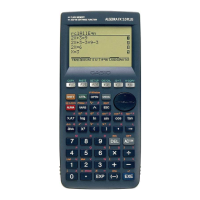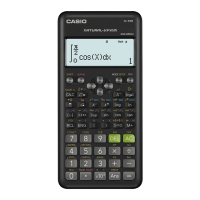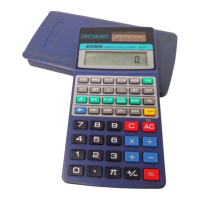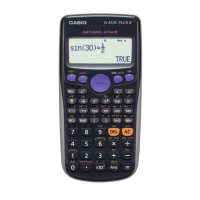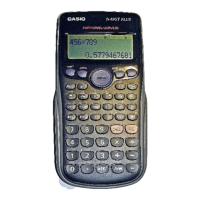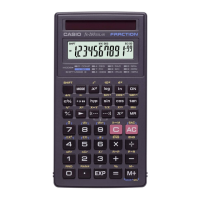19990401
k Using Multistatements
Multistatements are formed by connecting a number of individual statements for sequential
execution. You can use multistatements in manual calculations and in programmed calcula-
tions. There are two different ways that you can use to connect statements to form
multistatements.
• Colon (:)
Statements that are connected with colons are executed from left to right, without stopping.
•Display Result Command (
^^
^^
^)
When execution reaches the end of a statement followed by a display result command, execu-
tion stops and the result up to that point appears on the display. You can resume execution by
pressing the w key.
Example 6.9 ! 123 = 848.7
123 " 3.2 = 38.4375
Abcdaav(A)
!J(PRGM)6(g)6(g)3(:)g.j
*av(A)!J(PRGM)4(^)
av(A)/d.cw
w
2-2-7
Special Functions
# The final result of a multistatement is always
displayed, regardless of whether the
calculation ends with a display result
command.
Example : 123 ! 456: ! 5
Invalid
#You cannot construct a multistatement in
which one statement directly uses the result
of the previous statement.
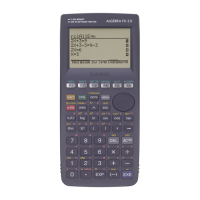
